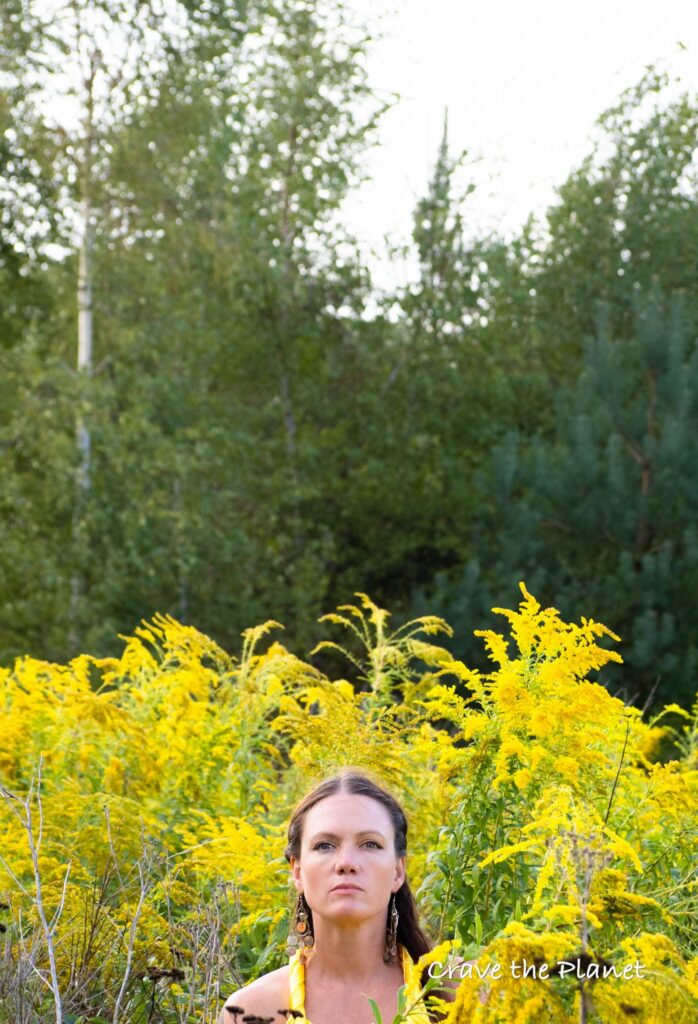Are you curious about outdoor photography and not quite sure where to start? I’ve got you covered!
If you’ve loved wildlife photography since you first flicked through the glossy pages of National Geographic, you’ll know all about the wonders of nature in a still frame.
But although it’s easy enough to buy a camera and follow the basics of point-and-shoot, to successfully capture the magic of the natural world while out on a hike, or on a multi-day hut to hut hike, you need a few tips to ensure your success—and your safety.

To help you out, I’ve compiled my best tips and tricks to start you on a journey that lets you capture all the highlights of your hike in glorious technicolor (or black and white!).
What You Will Learn
Equipment for Outdoor Photography
You don’t need to have the most expensive or extravagant camera, but you need to decide what kind of camera you want to use and familiarize yourself with it before you start walking.
You can choose between digital and film cameras or you could use your smartphone too.
Smartphones can take incredible shots, but if you have aspirations to be like Brian Skerry or Suzi Eszterhas, then you need to pick one of these options:
- Digital:
The first major consideration you’ll have to make is whether you wish to photograph in film or digital format. Digital cameras are affordable, have plenty of memory and highly adjustable settings to ensure the best shot.
They also tend to be lighter, which is a huge benefit if you’re on a long hike. You can also review your images instantly, adjusting settings and moving position as you go to ensure a good photo.
- Film:
Film cameras hold a certain prestige because of the unique and timeless quality of the images they capture. This is because of the colour consistency and dynamic range they offer.
However, they do mean that you may need to take along several rolls of film, and that you don’t know until you develop your film whether you got that great shot or not.
Read my Review of the ➡️ Top Hiking Cameras
Accessories

You’ll also need accessories to get the best shots. The most important accessories for shooting outdoors are:
- Lens:
There are two types of lenses essential to quality wildlife photography: the wide and the long. A long lens will allow you to capture subjects at a significant distance, such as beautiful birds that flitter amongst tall trees.
A wide lens is essential in capturing images in vast landscapes. The difference between a standard lens and a wide one may be in missing the full majesty of a herd of bison or the true breadth of sunset.
- Tripod:
A tripod will ensure consistent and steady images of the landscape. It will also allow you to employ other photography tips and tricks, such as time lapses.
You don’t have to pack an enormous tripod either. There are plenty of lightweight options that are ideal for a hike.
Rules of Photography

You don’t need an art degree to learn a few basic rules of photography that will ensure you capture quality images.
Learning and practicing these four ‘pillars’ of photography will help you get the best possible shots outdoors:
- Composition
- The placement of your subject in the frame
- Shutter speed
- The time for camera’s lens stays open to capture a shot
- Aperture
- The size of the opening of your lens
- ISO
- The brightness of your photo
Into the Wild: Set Yourself Up For Success
You may be the spontaneous type who will whip out a camera on the whim whilst on a hike. Or you may be a dedicated watchman, belly down by a river waiting for animals to drink.
Though you might prefer one to the other, a balance of patience and spontaneity and swift and slow are your best chance at success in wildlife photography.
Before you set off, ask yourself if you need to know your surroundings.
Not just to find and capture good subjects, but to ensure your safety.
If there’s a particular subject you wish to capture, asking in community forums and doing research can help you find the most safe and effective spot to ‘capture your prey’.
Paying attention to seasons, winds and weather might tell you just as much about the wildlife as going out yourself.
If you have a particular subject in mind, research about the eating, sleeping, drinking and mating habits of the creature will increase your likelihood of capturing it.
For example, certain birds only nest in certain trees, specific insects only pupate in certain seasons, portraits of people shine in the golden hour and landscapes appear far more expansive and glorious on a clear day.
The better prepared you are, the better your photographs will be!
Plan Ahead
It’s essential that you know where you’re going. A badly planned hike can result in disaster, so plan ahead.
Your phone and GPS are the best first-hand tools for your safety but will probably prove useless as you venture away from civilsation. Most preserved wilderness areas will have maps available along with markers indicating certain points on a trail or features in the area.
Follow your map and trail to a tee, venturing off only so far that you can easily still see your way back. The path untaken may be tempting- perhaps wonders yet un-photographed or a steep hill that looks over a great hill, but the wild is not a time to take chances. Thousands of nature lovers go missing in US National Parks alone, many of them fit and experienced.
That perfect shot is worth nothing if you never get to take it home with you.
Essential Safety Tips For Outdoor Photographers
Keep these tips in mind when you and your camera go hiking:
- Always tell someone where you’re going and when you expect to return
- Pack food and water
- Have a reliable source of light, such as a torch
- Wear comfortable, gripped shoes
- Don’t approach wildlife
- Dress for the weather but be prepared for it to change
- Protect yourself from the sun and heat
- Don’t strain to balance or reach for the perfect shot
- Ensure you’re back before sundown using our clever calculator
It’s also a good idea to do a basic first aid course to know how to cope with an emergency. Blisters aren’t the worst that can happen on a hike, and a bit of medical knowledge, bandages and a splint can make a stressful and unsafe situation less so.
Captions
You’ll also need some captions for sharing the best shots. Check out my curated lists of captions for your outdoor photography.
121 Dolomites Quotes and Captions
Final Verdict
I hope you enjoyed this guide and will stay safe when hiking and capturing the natural beauty through your lens. Outdoor photography is an awesome pursuit, and the results can last a lifetime!
Thanks for reading this post on outdoor photography.

Author profile: Morgan Fielder is a Doctor of Physical Therapy and passionate hiker who believes in exploring the world on foot with good food. Follow her journey as she shares science-based hiking tips and advocates for sustainable tourism.
Related Resources
MORE HIKING RESOURCES
Get more physical therapist expert hiking tips here 👎🏻
- Learn about Lago di Braies, the most famous photospot in the Dolomites
- Turn your SUV into a camper with the Exped Megamat Duo Mattress
- 🥾 Check out the Best Hut to Hut Hikes in Europe
- 🏰 Directory of Hiking Resources to Make Your Next Hike Comfortable
